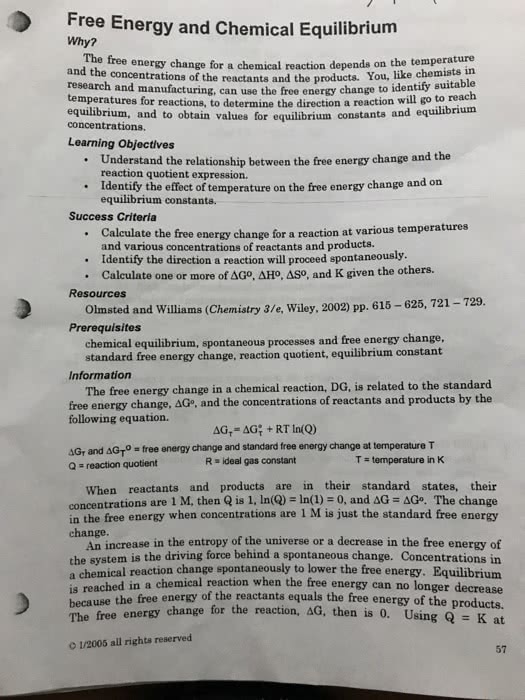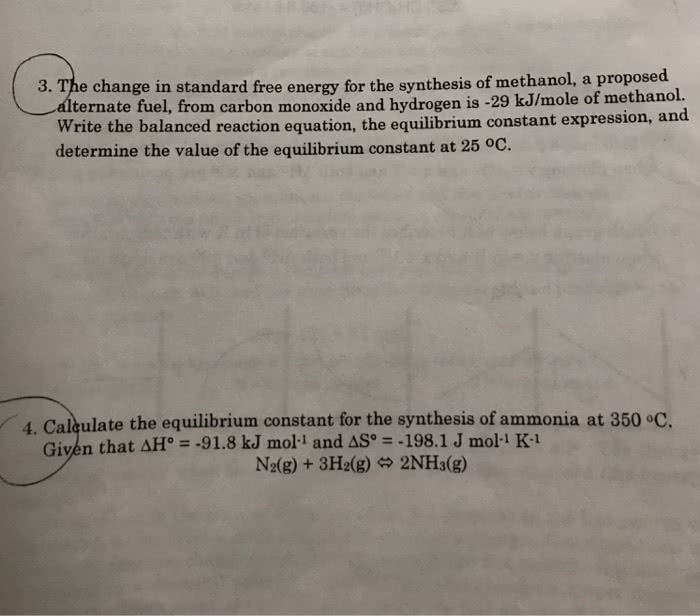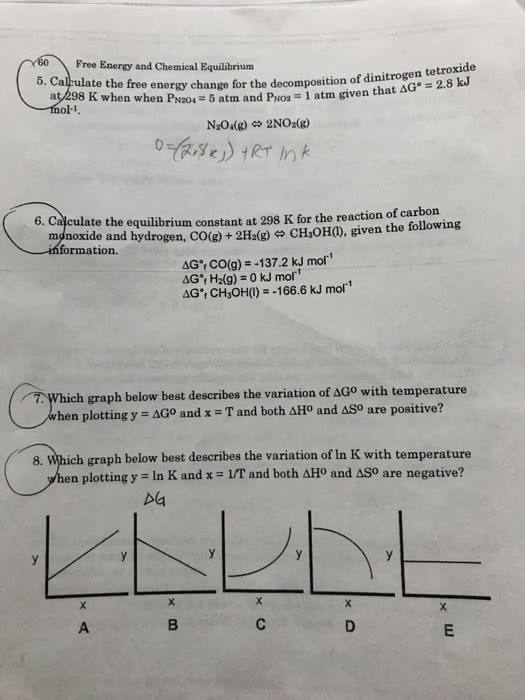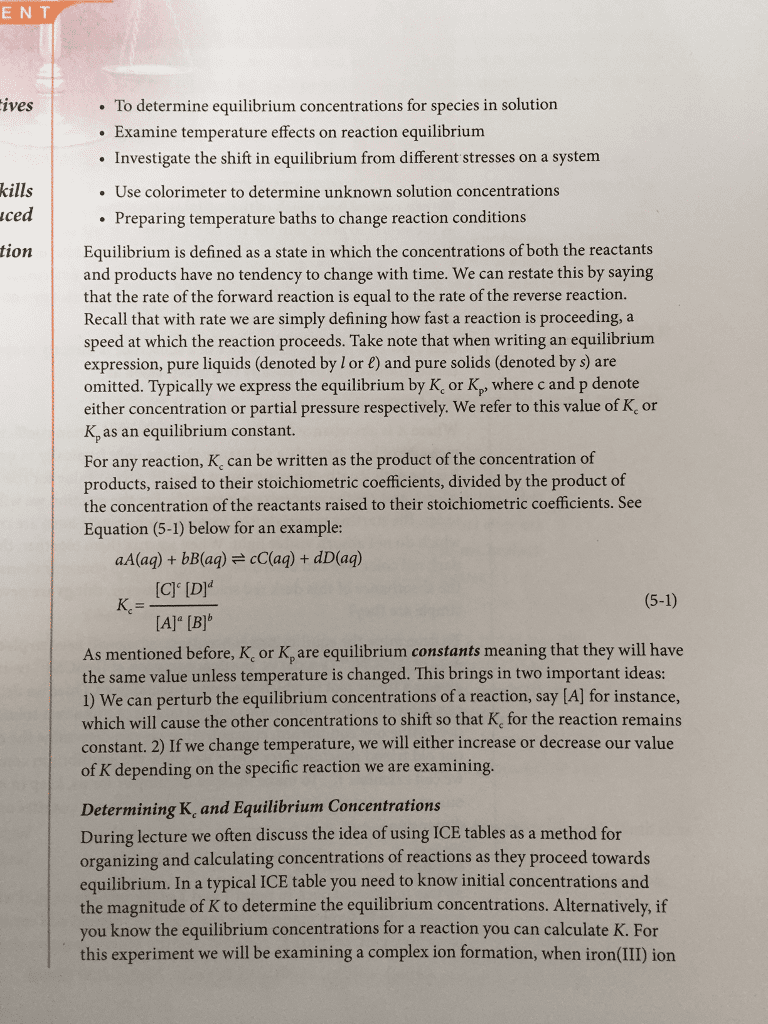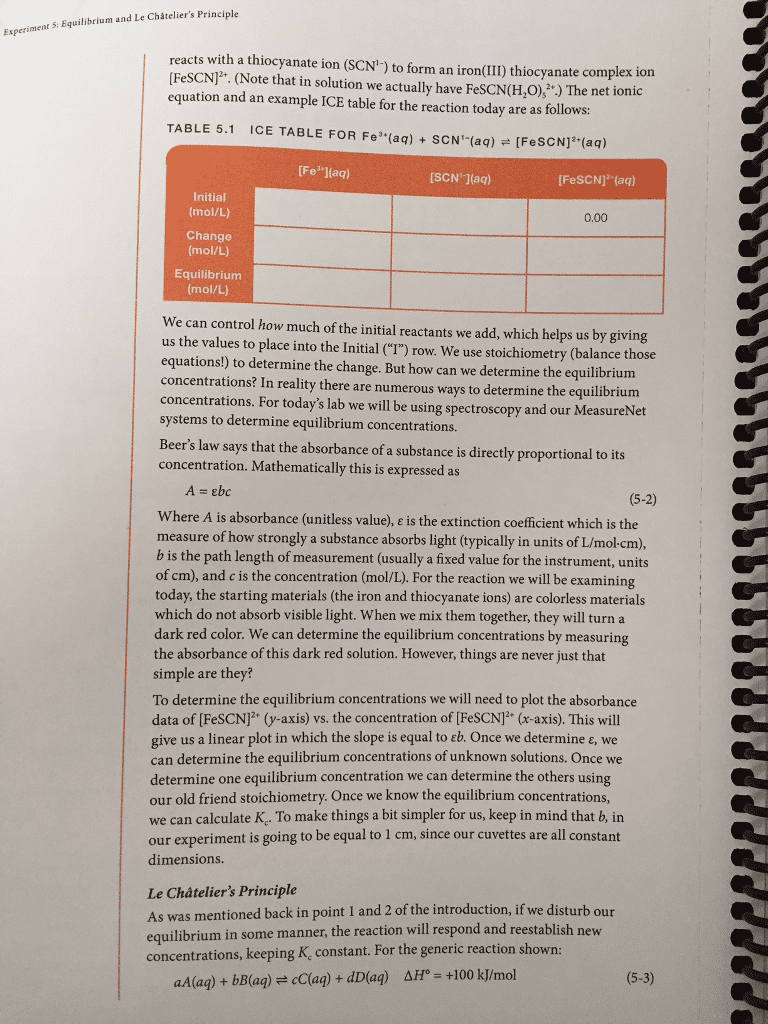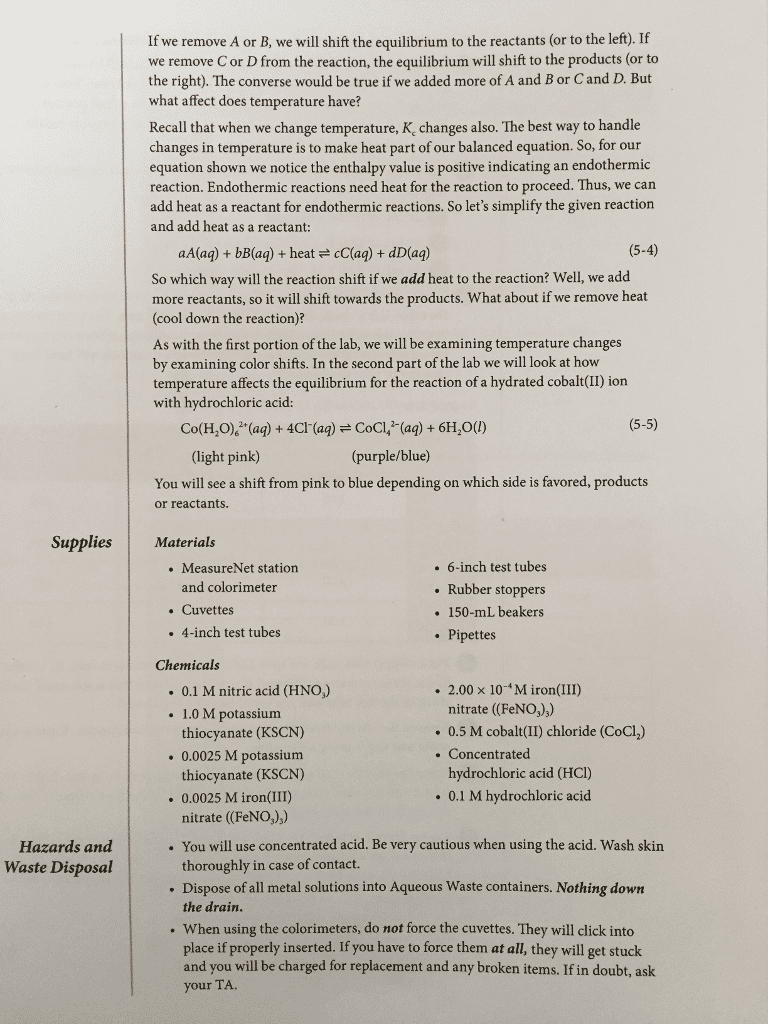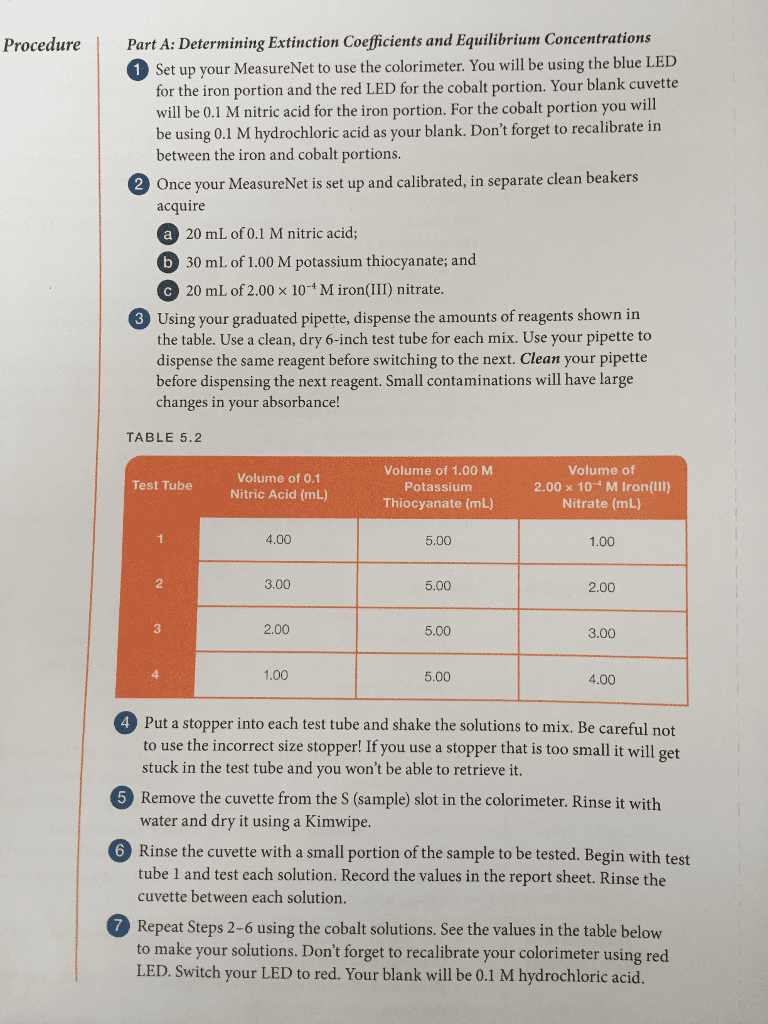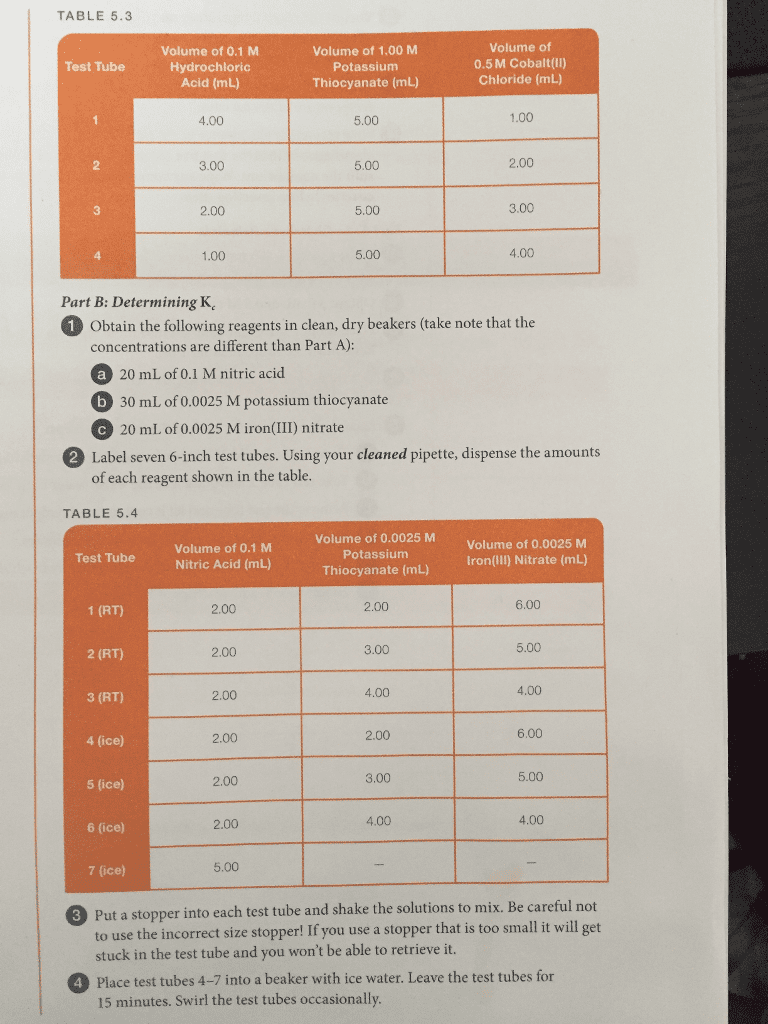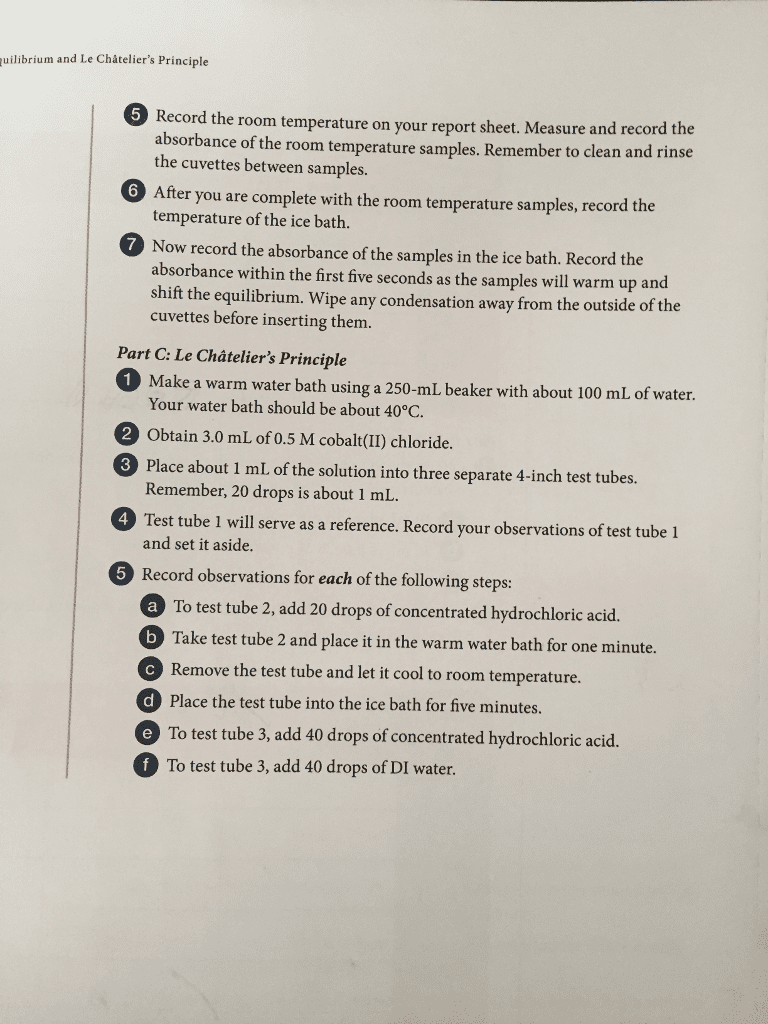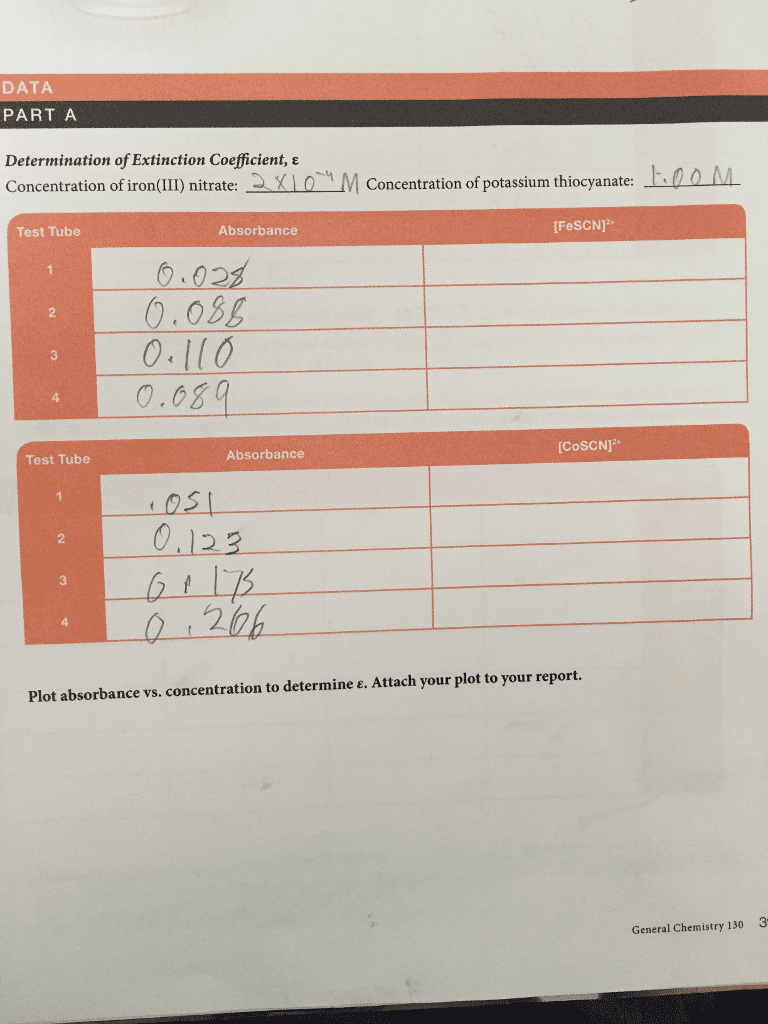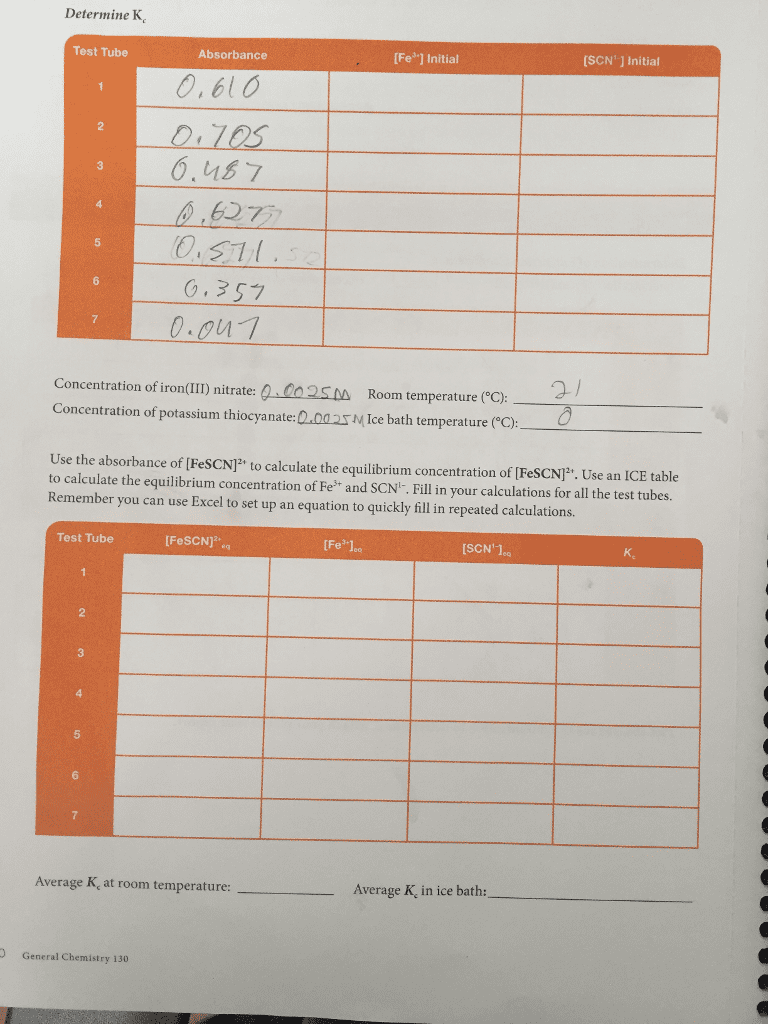CHEM1011 Lecture Notes - Lecture 25: Reaction Quotient, Dinitrogen Tetroxide, Equilibrium Constant

Lecture 25: Predicting change
Predicting change using the reaction quotient 1
The equilibrium constant describes the value of a particular ratio of reactants and products
when the system has come to equilibrium. Of course, reactant and product mixtures can be
prepared so as to produce many other, non-equilibrium values. The ratio is called the reaction
quotient, Q, in which case we may write the equilibrium condition as Q = K.
At equilibrium Q = K. To come to equilibrium, the reaction must proceed to the right (towards
products) and produce more NO2 (numerator) while consuming N2O4 (denominator) in order
to increase the value of Q from 0.0500 to 0.211.
Predicting change using the reaction quotient 2
The reaction quotient can be used qualitatively to predict how a system must change from a set
of initial conditions towards equilibrium (as above), or how it will respond to addition of some
component.
Le Châtelier’s Priciple
If a hage is iposed o a syste at euiliiu, the positio of the euiliiu ill shift i a
dietio that teds to edue that hage.
Although Le Châtelie’s Piiple oe-simplifies the situation, it works remarkably well.
find more resources at oneclass.com
find more resources at oneclass.com


